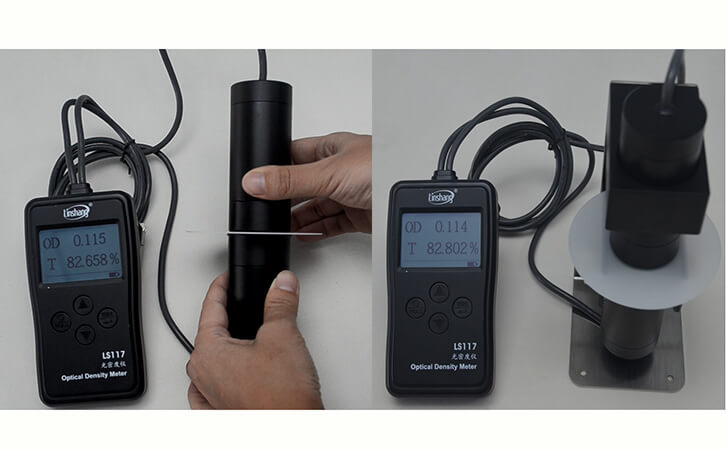How to measure visible light transmittance using optical density meter?
PC lampshade have been widely used as LED lamp accessories due to its outstanding performance. Traditional glass lampshades have gradually been replaced by PC lampshades due to its fragile nature. Manufacturers have certain requirements for the visible light transmittance of the PC lampshade. If the light transmittance doesn't meet the certain requirements, the lighting effect of the lamps will be affected. The light transmittance can be measured using a LS117 optical density meter. Some advantages of the PC lampshade and its transmittance/optical density measurement using optical density meter (light transmittance meter) are introduced in this paper.
1. Outstanding performance of PC lampshade
The PC lamp cover can diffuse the illumination area of the LED-point light source, making the illumination area wider and the appearance better.
PC lampshade has good electrical extremism and dimensional stability which is resistant to impact and is not brittle.
Gather the light better to make the light more concentrated and softer, avoiding the direct glare of the LED light.
The density is less than that of glass. It is not easy to be broken when it is used. The lampshade made of imported raw materials does not change color for 5-10 years. Its color is also diverse. It can be used in many harsh environments and can resist strong wind and the impact of ice and snow.
PC lampshades are generally matte or opalescent. The industry generally has regulations for the transmittance of PC lampshades. The transmittance of the transparent PC lamp cover can generally reach 92-95% and the transmittance of the diffusion grade PC lamp cover can generally reach 88-91%.
2. How to measure visible light transmittance of PC lampshade?
For PC shades of opalescent materials, we recommend a professional optical density meter for measurements.
Two measurement modes:
Measurement on pedestal, which is more suitable for regular materials or smaller materials.
Hand-held measurement, which takes down the probe for testing. This method is more suitable for irregular materials or larger materials.
Long press the "POWER" button to enter into the setting interface.
Select whether to shut down automatically or not.
Short press the "Confirm" button to confirm the setting.
Then select the measurement mode and confirm.
Then calibrate the OD to 0 and transmittance to 100%.
Lift the probe up, place the test material between the two probes.
The OD value and transmittance will be displayed on the interface immediately.

As shown in the figure above, the white material was measured by the LS117 optical density meter and the transmittance of the material was 82%. If you measure with the optical density meter designed with a parallel light path, the resulting data will be too small.
3. Why do we use optical density meter?
The Linshang LS117 optical density meter is a optical density meter with an integrated sphere effect using the diffuse transmission principle. It is suitable for optical density and transmittance test of aluminized film, film, X-ray film, lens ink and other materials, as well as light transmittance test of opalescent translucent material and frosted matte material. The instrument light source conforming to the CIE photopic luminosity function. This transmittance meter can also pass the inspection of Chinese institution of metrology. The LS117 optical density meter can receive light diffused through the PC lampshade with high precision and it is the best choice for customers.
- LS117 Optical Densitometer Measure Welding Mask Glass
- Companre LS117 Optical Density Meter With Others
- LS117 Densitometer Measure Application
- Difference of LS117 Densitometer and X-Rite 341 Densitometer
- LS117 Transmission Densitometer-Related Knowledge
- The details of LS152 glass light transmittance on-line monitoring device
